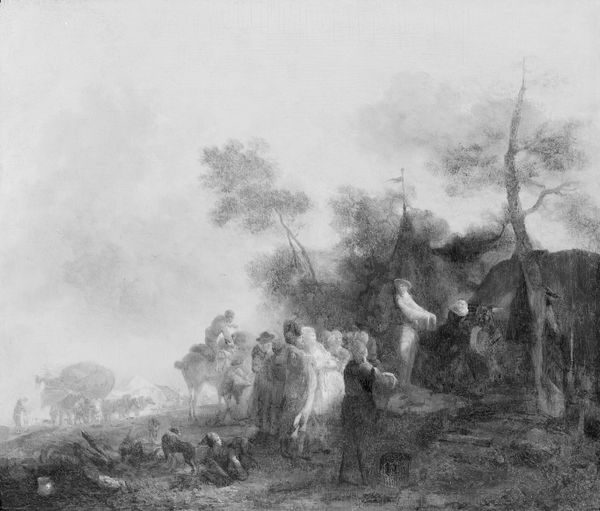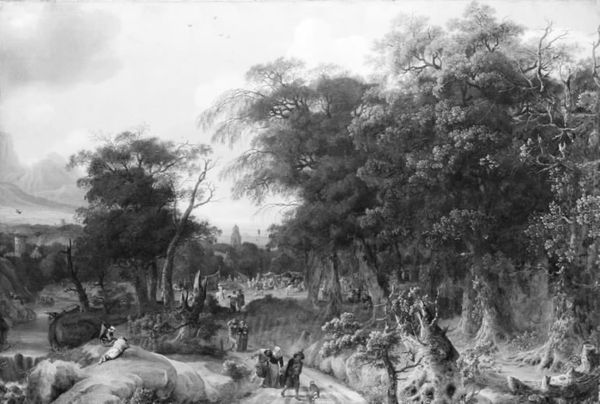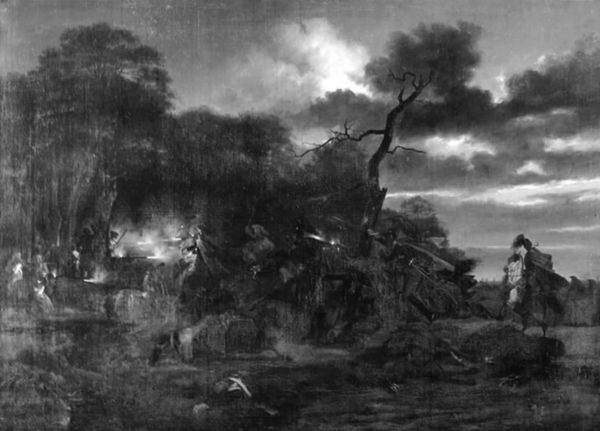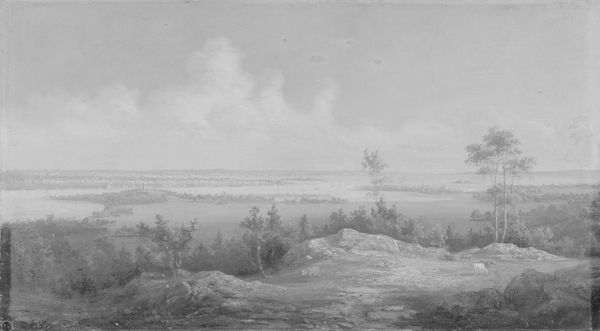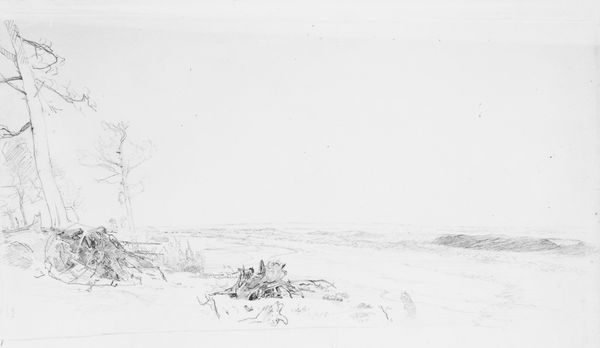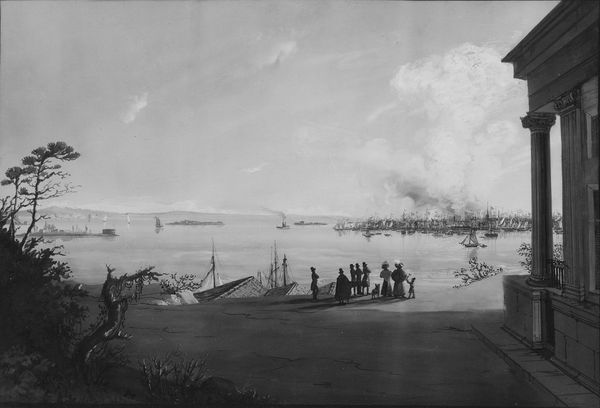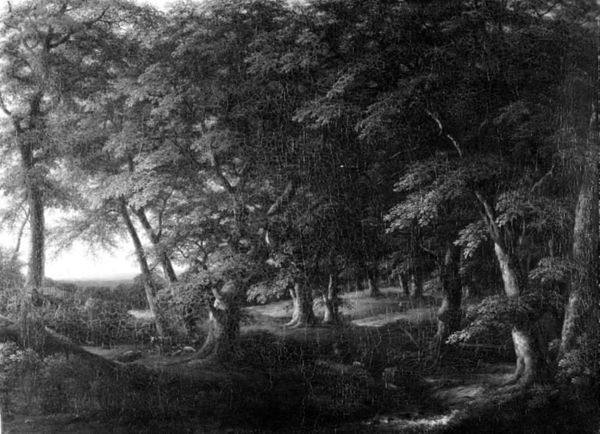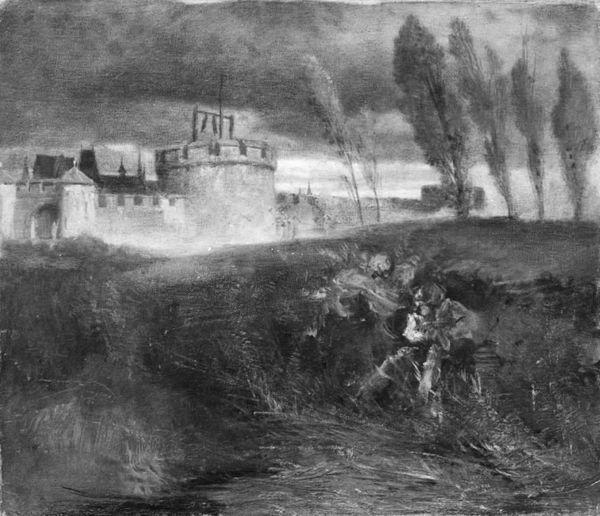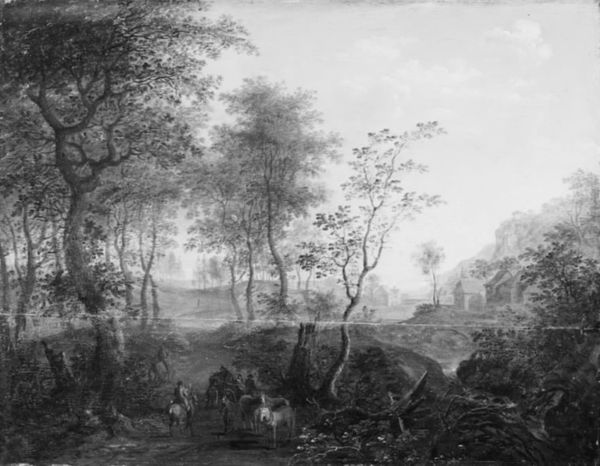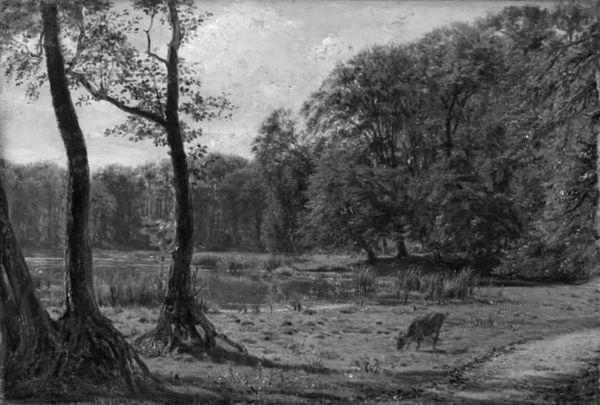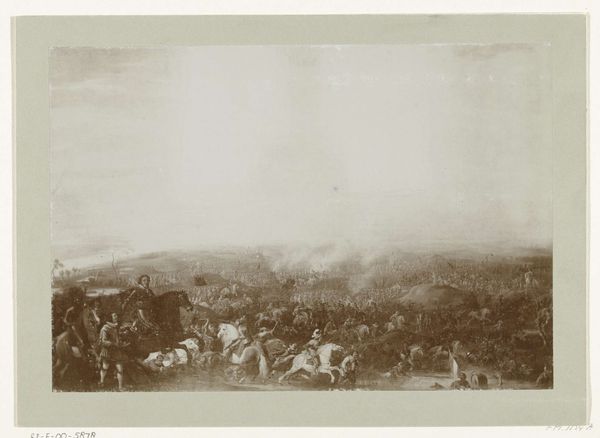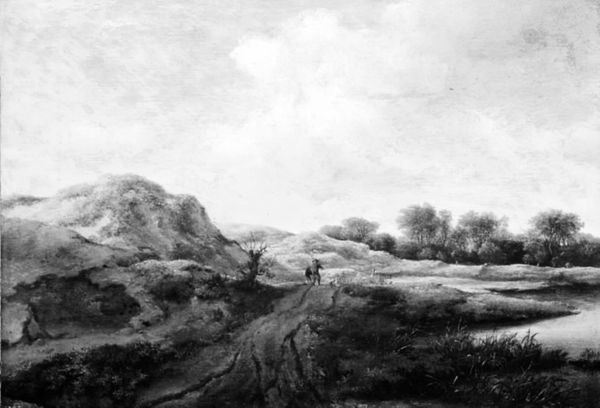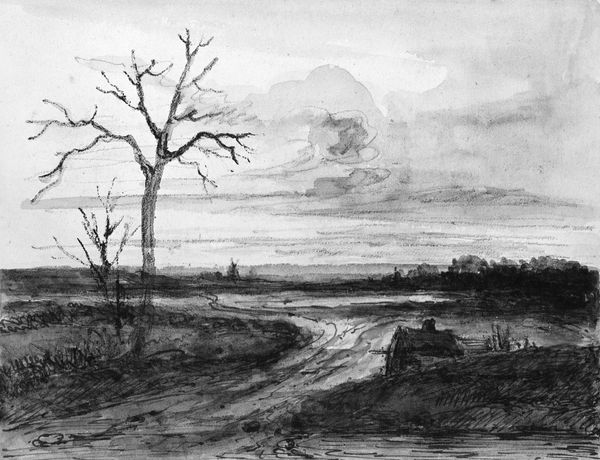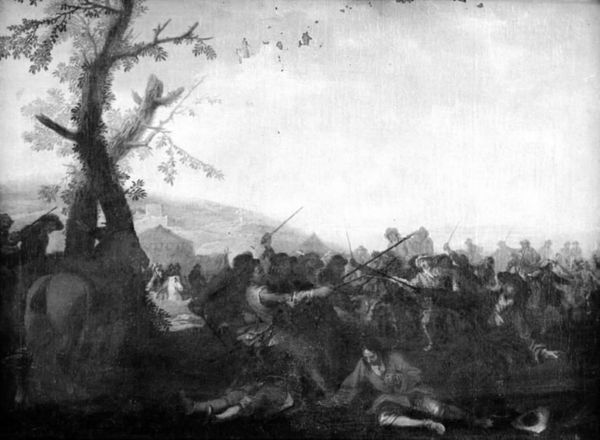
painting, oil-paint, canvas
#
dutch-golden-age
#
painting
#
countryside
#
oil-paint
#
landscape
#
charcoal drawing
#
canvas
#
genre-painting
#
charcoal
#
graphite
#
realism
Dimensions: 65.3 cm (height) x 80.6 cm (width) (Netto)
Editor: So, here we have Jan Wijnants' "Winter Scenery," painted sometime between 1646 and 1684, using oil on canvas. The monochromatic palette gives the whole piece a very bleak, almost haunting atmosphere. What do you see in this painting beyond just a winter landscape? Curator: Well, the subdued tones immediately speak to the socio-political climate of the Dutch Golden Age. Despite the immense wealth and flourishing art market, life for many was still tied to the land and vulnerable to harsh winters. How does Wijnants position the viewer in relation to these figures navigating the frozen landscape? Editor: I notice how small the people are, almost overwhelmed by the scenery, emphasizing human dependence on, or even subjugation to, the natural world. Curator: Exactly. Landscape paintings were becoming increasingly popular, moving away from strictly religious or allegorical subjects. This focus reflected a changing social structure where the merchant class sought new forms of artistic expression aligned with their growing prominence. But note that "genre painting", that everyday scene, still provided a public opportunity to reinforce social structures or propose cultural value systems. Editor: So, would people have seen this less as "just" a pretty winter scene and more of a statement about their place in the world? Curator: Precisely. Even seemingly simple landscapes participated in constructing and reinforcing ideas about Dutch identity and its relationship to the environment. It makes you wonder who the intended audience was, and what messages they extracted. Editor: That makes me think about the economics of art in that period - the merchant class driving this demand and shaping artistic representation. Curator: It also underscores how artworks were and are never simply aesthetic objects but rather powerful carriers of socio-cultural values. Editor: That's fascinating. It really shifts how I see these older landscape paintings. Thanks!
Comments
No comments
Be the first to comment and join the conversation on the ultimate creative platform.
